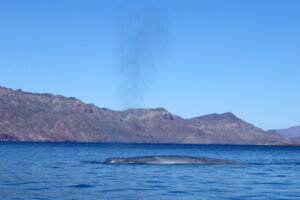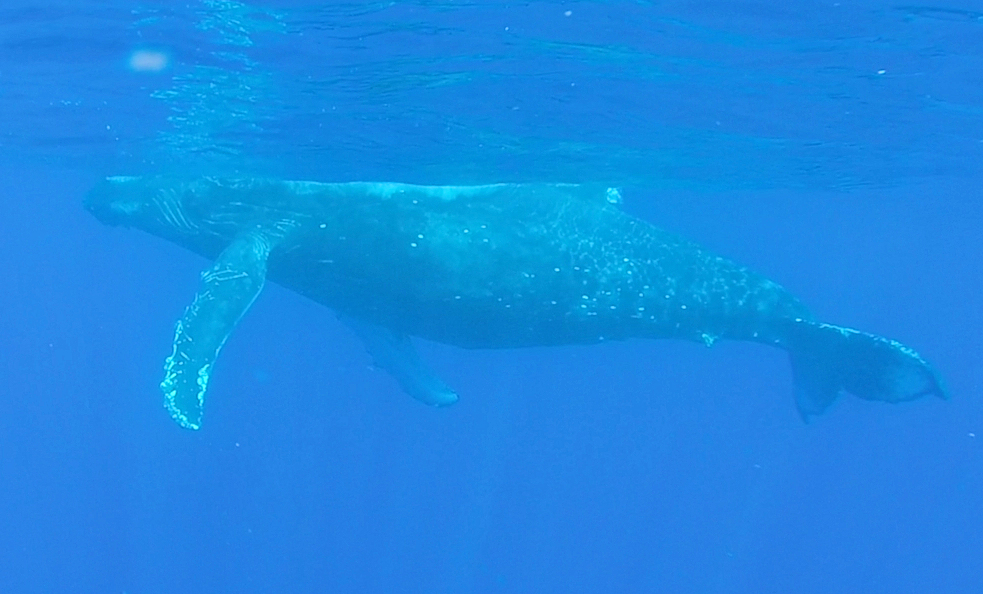Balaenopteridae Family of Ballen or Rorqual Whales
Phylogeny: The Whales are marine mammals that are members of the Balaenopteridae or Rorqual Family belonging to the Phylum Chordata . There are twelve species in the Family of which five are found in coastal waters of the West Coast of Mexico. The term Rorqual stems from a Norwegian word meaning pleated or furrowed. This refers to the pleated throat that characterizes these whales. They are in the Class Mammalia and the Order Artiodactyla. This places them in the same order as hoofed ungulates, from which they evolved. They are in the Infraorder Cetacea, the Toothed and Baleen Whales.
Distribution: Rorquals are found worldwide in all temperate, tropical, and polar waters. Generally, they spend summers feeding in nutrient rich polar and temperate waters. They migrate annually to warmer waters to breed and calf during the winter months.
Morphology: The Rorquals are very large whales with slender and streamlined bodies that reach at least 7 meters (23 feet) in length, with most species significantly exceeding that length. It is thought that some of the Rorquals are the largest single animals that have ever lived. These heads of these whales have flatter tops compared to other whales, they have two blowholes on top of their head causing a “V” shaped spout, throat pleats that begin at the snout and run posteriorly to the navel in some species, dorsal fins that are set well behind the center line whose height varies between species and elongated flippers. With the exception of the Humpback Whale, all Rorquals are fast swimmers, with some exceeding 50 kph (30 mph). Rorquals are long-lived, with the lifespan of all species thought to exceed fifty years.
Ecosystem Roles: The Rorqual Whales are lunge-feeders with the design of their jaws and the throat pleats allowing them to quickly scoop up huge mouthfuls of water, as they push their body forward for a short distance. The baleen whales filter food from the water by forcing it through plates of baleen. They consume copepods, pelagic crabs, krill, fish, and squid. The number and fineness of the baleen varies between species and determines the size of the food they can catch. Most of their feeding is done at the surface or within the first 150 m (500 feet) of the water column. Still, some species can dive to depths exceeding 500 m (1,640 feet). In turn they are preyed upon by Killer Whales. The Rorqual Whales are currently of concern from a conservation perspective. They are facing a new threat in the form of micro plastics which are formed when degradable plastic products degrade into tiny particles. The Baleen Whales are unable to separate these plastics from their food, and as they digest these plastics, the plastics release toxins which accumulate in the whale’s tissues.

